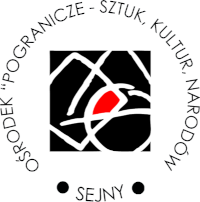The savagery caught civilized Poles entirely off guard. "With foresight one could have predicted postwar anti-Semitism," wrote the eminent sociologist Stanislaw Ossowski in 1946. "But only a real cynic or psychopathic misanthrope could have foreseen that in liberated Poland a tendency to continue Hitlerite mass murder would survive." Other surviving tendencies included the blood libel, the belief that Jews drink Christian blood, now with the twist that Jews used it to restore their bodies shrunken in death camps. There was also the stock bigotry that understood Jews as wealthy and arrogant, even though they were now destitute and broken.
What drove the malice toward the devastated Jews? Mr. Gross's striking thesis is that, above all, Poland's postwar anti-Semitism has its origin in the massive transfer of property from Jews to Poles that took place during the war.
In 1939, 3.5 million Jews lived in Poland; 90% were murdered. What happened to their homes, apartments, offices, factories, fields, silverware, furniture, books, jewelry? There were at least a half million Polish "successors" to "abandoned" Jewish real estate in small towns and villages alone. Millions of Poles stood to lose their plunder — in some cases the very roof over their heads — if restitutions were made. Postwar anti-Semitism, Mr. Gross persuasively argues, was grounded in an effort by Poles to protect real, material gains from Jewish survivors, numbering 200,000, many of whom returned to their homes to find them occupied by new and hostile residents. "Fear" is vividly told, intelligent, painful, and punctuated by understandable flashes of the author's indignation and disgust.
"Erased: Vanishing Traces of Jewish Galicia in Present-Day Ukraine" (Princeton University Press, 256 pages, $26.95), by Omer Bartov, a professor of history at Brown University, is an account of the author's "journey of self-discovery" through 20 towns in western Ukraine in 2003-2004, made with the purpose of researching the region's Jewish past. For nearly four centuries, Jews (including Mr. Bartov's family) constituted between a third and a half of the territory's urban population. His book shows how the evidence of Jewish life that survived obliteration by Nazis and their Ukrainian collaborators is now being systematically "erased." In recent years, synagogues have been toppled or converted into furniture stores. The municipal museum of Ternopil, which on the eve of the war had 14,000 Jews among its 36,000 residents, doesn't mention that Jews ever lived there. Cabdrivers in Lviv can't even locate the site of the nearby Yaniv concentration camp, where as many as 200,000 Jews were killed between 1941–1943. This denial exists partly because it protects Ukrainian nationalist heroes, who were complicit in the murder, partly because the memory of Jewish suffering diminishes the memory of Ukrainian suffering, and mostly because Ukrainians never cared much for Jews in the first place.
Despite its promising subject, Mr. Bartov's book fails the standard set by Mr. Gross. "Fear" is filled with harrowing vignettes about individual tragedies; "Erased" relates entire massacres in short insensate sentences: "In February 1942 approximately 2,000 Jews were shot and buried in mass graves on Fedir Hill." Mr. Gross draws on the testimony of survivors, court depositions, memoirs, letters, interviews, documentaries, and newspapers; Mr. Bartov's footnotes consist mainly of links to Web sites. Mr. Gross speaks of people; Mr. Bartov has only ghost towns of peeling paint, sunken gravestones, and crumbling synagogues — not one of the book's 60 photographs depicts a person from these destroyed towns — which make the book feel like a grim architectural tour. Even when Mr. Bartov tantalizingly notes that a famous writer like Sholom Aleichem or S.Y. Agnon wrote of the town that Mr. Bartov visits, he fails to recount even a sentence from them. Ghost towns may be what one finds there, but why does this supposedly "biographical" tour contain not a single conversation with a member of the communities whose past it claims to trace? Did nothing interesting happen on his trip? Were there no poignant moments, no unexpected encounters?
It has been 62 years since World War II ended. Many nations have undertaken a painful introspection, Germany foremost among them. Only in recent years has Poland dared to confront its wartime and postwar persecution of Jews. Curiously, Mr. Bartov mentions this, while Mr. Gross does not. Mr. Bartov alludes to the revival of Jewish culture in Poland — the Jewish organizations, restaurants, music festivals, and Ph. D. programs that have sprung up. There is no such revival in Ukraine, he says, a country where anti-Semitism remains vigorous. The Polish writer Jerzy Andrzejewski wrote of his countrymen in July 1946: "Mankind — let us use this big word — fought six years for freedom and justice and for human dignity in the cruelest combats in history, and woe to those nations who are not able to draw appropriate conclusions from that experience." Surely it is interesting to observe that in the cases of Poland and Ukraine, although both Slavic and once controlled by the USSR, one has become a robust democracy while the other drifts ever further into sordid instability.
Mr. Tartakovsky is associate editor of the Claremont Review of Books.
By JOSEPH TARTAKOVSKY, The New York Sun, 3 October 2007
Persecution In War and Postwar
Oct. 10, 2011, 3:22 p.m.

Some scenes of that horror, related by Mr. Gross, will never leave you: a young man, head bleeding and bowed, surrounded by a crowd that slowly pelts him to death, stone by leisurely stone; a little boy, alone in the world after losing his entire family, crying each night after being bullied and beaten at school; well-dressed women being dragged from trains to have their heads crushed with iron rails; and the book's central event, the July 1946 pogrom in Kielce, the worst peacetime pogrom in post-WWII Europe, where the rage of the assailants was such that they even followed their victims to the hospital. When patients heard Jews were arriving, an eyewitness recalls, "a lot of the less sick ones got up to murder them."

